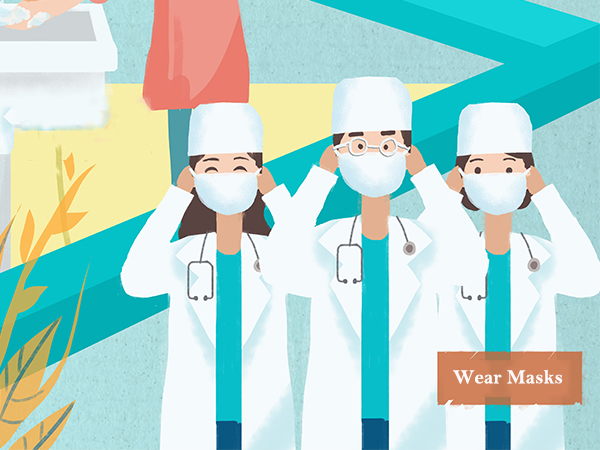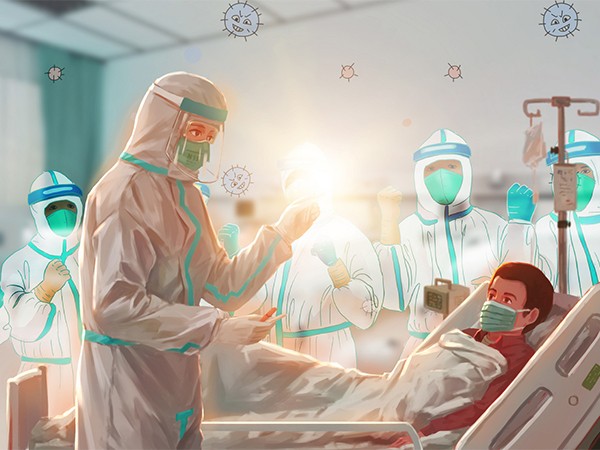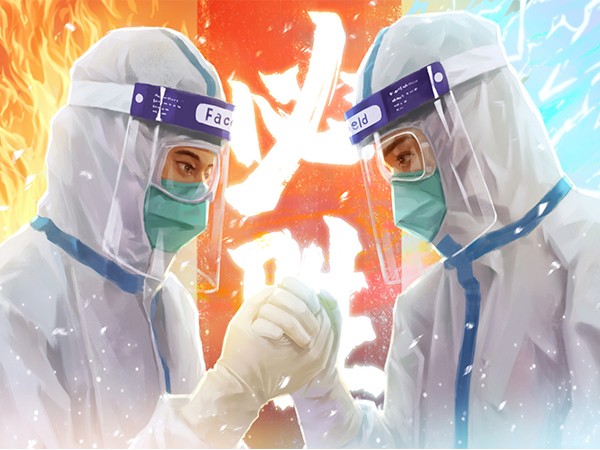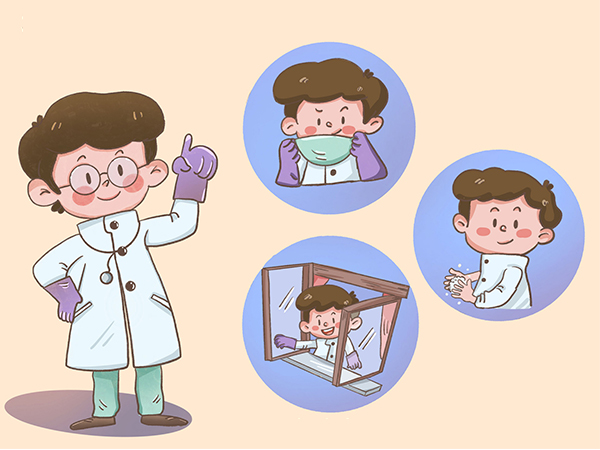| Guidelines on Wearing Masks Scientifically for the Public |
| From:衡阳市党政门户网 | Date Add in:2022-07-15 10:40:53 [A A] |
|
Wearing masks scientifically can prevent respiratory infectious diseases such as novel coronavirus pneumonia and influenza, and protects both themselves and the public health. At present, in order to guide the public to wear masks scientifically, effectively prevent and control the epidemic, and protect public health, the following guidelines are proposed. Here are the guidelines on wearing masks scientifically for public. This guideline makes scientific suggestions on wearing masks to combat COVID-19 in different scenarios.
(1) Home and outdoor, no people gathered, good ventilation. ♦ Protection recommendations: Do not wear a mask (2) Being in a crowded place, such as office, shopping center, restaurant, meeting room, workshop, box elevator, public transportation, etc. ♦ Protection recommendations: In medium and low-risk areas, spare masks (disposable medical masks or medical surgical masks) should be worn with you, and wear masks when in close contact with other people (less than or equal to 1 meter). In high-risk areas, wear disposable medical masks. (3) For those with cold symptoms such as coughing or sneezing. ♦ Protection recommendations: Wear disposable medical masks or medical surgical masks.
(4) For those who live with people who are separated from their homes and discharged from rehabilitation. ♦ Protection recommendations: Wear disposable medical masks or medical surgical masks.
Personnel in Specific Places (1) densely populated hospitals, bus stations, railway stations, subway stations, airports, supermarkets, restaurants, public transport, as well as community and unit import and export places. ► Protection recommendations: In medium and low-risk areas, workers wear disposable medical masks or surgical surgical masks. In high-risk areas, workers wear medical surgical masks or protective masks that comply with KN95 / N95 and above. (2) In prisons, nursing homes, welfare homes, mental health medical institutions, school classrooms, construction site dormitories and other densely populated places.
► Protection recommendations: In medium and low-risk areas, keep a spare mask with you on a daily basis (disposable medical masks or medical surgical masks), and wear masks when people gather or come into close contact with one another (less than or equal to 1 meter). In high-risk areas, workers wear medical surgical masks or protective masks that comply with KN95 / N95 and above; others wear disposable medical masks.
Key Personnel Suspected cases, confirmed cases, and asymptomatic infections of new coronavirus pneumonia; close contacts of new coronavirus pneumonia; entry people (from entry to end of quarantine). • Protective suggestion: Wear medical surgical masks or non-exhalation valves in accordance with KN95 / N95 and above protective masks. Occupational Exposure Personnel (1) Medical personnel such as general outpatient clinics and wards; emergency medical personnel in medical institutions in low-risk areas; administrative personnel, police, security, cleaning, etc. engaged in epidemic prevention and control.
⇒Protective suggestion: Wear surgical masks.
(2) Personnel working in the ward and ICU of patients diagnosed with a COVID-19 pneumonia, suspected case patients; medical staff at designated medical institutions for fever clinics; medical staff in emergency departments of medical institutions in middle and high risk areas; epidemiological investigations and experiments room testing, environmental disinfection personnel; personnel transferring confirmed and suspected cases. ⇒Protective suggestion: Wear medical protective masks.
(3) Operators engaged in the collection of respiratory specimens; staff who perform tracheotomy, tracheal intubation, bronchoscopy, sputum suction, cardiopulmonary resuscitation, or lung transplantation, pathological anatomy in patients with novel coronavirus pneumonia. ⇒Protection suggestion: hood-type (or full-type) powered air-supply filter-type respirator, or half-face-type power-supply air-filter-type respirator with goggles or full screen; P100 anti-particulate matter is required for both types of respirator Filter elements, filter elements cannot be reused, protective equipment shall be used after disinfection.
Precautions for Use (1) Respiratory protective equipment includes face masks and respirators. Wash hands before wearing and after removing.
(2) Pay attention to the front and back, and up and down when wearing a mask. The mask should cover the nose and nose, and adjust the nose clip to fit the face.
(3) Avoid touching the inside and outside of the mask with your hands during wearing. Take off the mask by removing the cord at both ends.
(4) Wearing multiple masks cannot effectively increase the protective effect, but instead increases the resistance to breathing and may damage the adhesion.
(5) There is no evidence to prove the effectiveness of various measures such as cleaning and disinfection of masks. (6) Both disposable medical masks and medical surgical masks are used for a limited time, and the cumulative use does not exceed 8 hours. Occupational exposure personnel do not use masks for more than 4 hours and cannot be reused. |
Co-sponsored by Information Office of Hengyang Municipal People's Government Technical Support & Design:Hengyang Normal University
ICP NO:05002289



